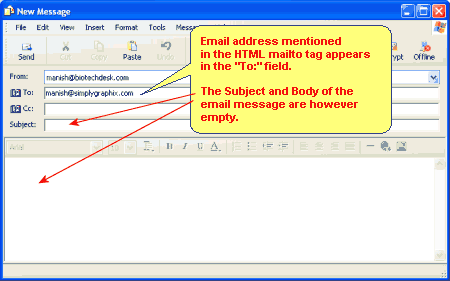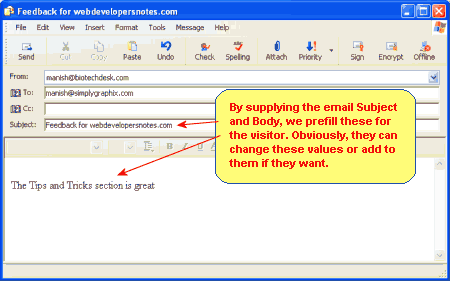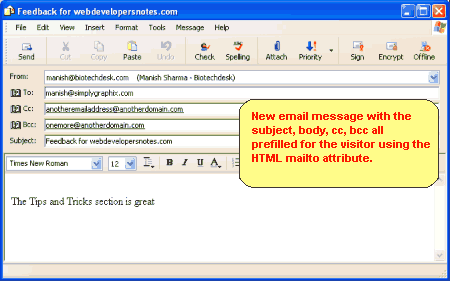<asp:Repeater ID="dayRepeater" runat="server" OnItemDataBound="dayRepeaterItemDataBound">
<HeaderTemplate>
<%--PKM added id for the tr--%>
<table class="main" cellspacing="0" cellpadding="0" align="center">
<tr id="thTopPanel" runat="server">
<th class="empty" style="height: 29px;">
</th>
<th id="dateLtlContainer" runat="server" style="height: 29px; width: 560px">
<asp:Literal ID="dateLtl" runat="server" />
</th>
</tr>
</HeaderTemplate>
<ItemTemplate>
<tr id="apptRow" runat="server">
<%--PKM added id for the th--%>
<th class="row" id="thLeftPanel" runat="server" width="10px">
<asp:Literal ID="timeLtl" runat="server" />
</th>
<td>
<div style="text-align: right;">
<a id="cal_dayadd_event" href="events.aspx" runat="server">
<img alt="" border="0" src="images/icon-add-big.gif" />
</a>
</div>
<asp:Repeater ID="dayChildRep" runat="server" OnItemDataBound="dayChildRep_ItemDataBound">
<ItemTemplate>
<div style="text-align: left;">
<asp:Panel ID="target_panel" runat="server">
<input type="hidden" id="patMrnh" runat="server" />
<input type="hidden" id="patLastNmh" runat="server" />
<input type="hidden" id="patFirstNmh" runat="server" />
<input type="hidden" id="apptDateh" runat="server" />
<input type="hidden" id="apptTimeh" runat="server" />
<input type="hidden" id="apptParticipantsh" runat="server" />
<input type="hidden" id="apptTitleh" runat="server" />
<input type="hidden" id="apptTypeh" runat="server" />
<input type="hidden" id="apptDesch" runat="server" />
</asp:Panel>
</div>
</ItemTemplate>
</asp:Repeater>
</td>
</tr>
</ItemTemplate>
<FooterTemplate>
</table>
</FooterTemplate>
</asp:Repeater>
protected void dayRepeaterItemCommand(Object sender, RepeaterCommandEventArgs e)
{
}
protected void dayRepeaterItemDataBound(Object Sender, RepeaterItemEventArgs e)
{
string times = "";
if (e.Item.ItemType == ListItemType.Item || e.Item.ItemType == ListItemType.AlternatingItem)
{
//PKM
HtmlTableCell thTopPanel = (HtmlTableCell)e.Item.FindControl("thLeftPanel");
thTopPanel.Style.Add(HtmlTextWriterStyle.BackgroundColor, "Green");
string str1 = "Red";
//PKM
Literal timeCol = (Literal)e.Item.FindControl("timeLtl");
if (DataBinder.Eval(e.Item.DataItem, "times").ToString() != "")
{
if (DataBinder.Eval(e.Item.DataItem, "times").ToString() != "All Day")
timeCol.Text = Convert.ToDateTime(DataBinder.Eval(e.Item.DataItem, "times")).ToShortTimeString();
else
timeCol.Text = DataBinder.Eval(e.Item.DataItem, "times").ToString();
}
times = timeCol.Text;
//PKM
timeCol.Text = "<font color='" + str1 + "'>" + times + "</font>";
//PKM
HtmlAnchor cal_dayadd_event = (HtmlAnchor)e.Item.FindControl("cal_dayadd_event");
if (cal_dayadd_event != null)
cal_dayadd_event.HRef = "events.aspx?day_date=" + hdnDate.Value + "&day_time=" + times;
Repeater dayChildRep = (Repeater)e.Item.FindControl("dayChildRep");
DataSet local_ds = GetApptsByTime(times);
if (local_ds.Tables.Count > 0)
{
dayChildRep.DataSource = GetApptsByTime(times);
dayChildRep.DataBind();
}
}
if (e.Item.ItemType == ListItemType.Header)
{
//PKM
HtmlTableRow thTopPanel = (HtmlTableRow)e.Item.FindControl("thTopPanel");
thTopPanel.Style.Add(HtmlTextWriterStyle.BackgroundColor, "Green");
string str = "Red";
//PKM
Literal dateCol = (Literal)e.Item.FindControl("dateLtl");
if (Request["day"] != null)
{
if (Convert.ToDateTime(Request["day"]).Date != DateTime.Now.Date)
{
//PKM ADDEDTHE FONT TAG
dateCol.Text = "<font color='" + str + "'>" + Convert.ToDateTime(Request["day"]).DayOfWeek.ToString() + Convert.ToDateTime(Request["day"]).ToString("<br />MMMM d, yyyy") + "</font>";
}
else
{
//PKM ADDEDTHE FONT TAG
dateCol.Text = "<font color='" + str + "'>" + DateTime.Now.DayOfWeek.ToString() + DateTime.Now.ToString("<br />MMMM d, yyyy") + "</font>";
HtmlTableCell htc = (HtmlTableCell)e.Item.FindControl("dateLtlContainer");
htc.Attributes.Add("class", "today");
}
}
else
{
//PKM ADDEDTHE FONT TAG and date format
string st = "d.MM.yy";
dateCol.Text = "<font color='" + str + "'>" + DateTime.Now.DayOfWeek.ToString() + DateTime.Now.ToString("<br />"+st) + "</font>";
HtmlTableCell htc = (HtmlTableCell)e.Item.FindControl("dateLtlContainer");
htc.Attributes.Add("class", "today");
}
}
}
protected void dayChildRep_ItemDataBound(Object Sender, RepeaterItemEventArgs e)
{
string event_id = "", event_title = "", event_date = "", event_time = "", event_time_end = "",
event_AppointmentType = "", event_PatLastName = "", event_PatFirstName = "", event_PatMrnNumber = "",
event_Participants = "", event_is_public = "", event_desc = "", event_all_day = "", event_ParticipantsText = "";
if (e.Item.ItemType == ListItemType.Item || e.Item.ItemType == ListItemType.AlternatingItem)
{
event_id = DataBinder.Eval(e.Item.DataItem, "event_id").ToString();
if (!(DataBinder.Eval(e.Item.DataItem, "event_time").ToString() == string.Empty))
event_time = Convert.ToDateTime(DataBinder.Eval(e.Item.DataItem, "event_time")).ToShortTimeString();
if (!(DataBinder.Eval(e.Item.DataItem, "event_time_end").ToString() == string.Empty))
event_time_end = Convert.ToDateTime(DataBinder.Eval(e.Item.DataItem, "event_time_end")).ToShortTimeString();
if (!(DataBinder.Eval(e.Item.DataItem, "event_Participants").ToString() == string.Empty))
event_Participants = DataBinder.Eval(e.Item.DataItem, "event_Participants").ToString();
if (!(DataBinder.Eval(e.Item.DataItem, "event_ParticipantsText").ToString() == string.Empty))
event_ParticipantsText = DataBinder.Eval(e.Item.DataItem, "event_ParticipantsText").ToString();
if (!(DataBinder.Eval(e.Item.DataItem, "event_all_day").ToString() == string.Empty))
event_all_day = DataBinder.Eval(e.Item.DataItem, "event_all_day").ToString();
if (!(DataBinder.Eval(e.Item.DataItem, "event_desc").ToString() == string.Empty))
event_desc = DataBinder.Eval(e.Item.DataItem, "event_desc").ToString();
if (!(DataBinder.Eval(e.Item.DataItem, "event_is_public").ToString() == string.Empty))
event_is_public = DataBinder.Eval(e.Item.DataItem, "event_is_public").ToString();
if (!(DataBinder.Eval(e.Item.DataItem, "event_AppointmentType").ToString() == string.Empty))
event_AppointmentType = DataBinder.Eval(e.Item.DataItem, "event_AppointmentType").ToString();
if (!(DataBinder.Eval(e.Item.DataItem, "event_title").ToString() == string.Empty))
event_title = DataBinder.Eval(e.Item.DataItem, "event_title").ToString();
if (!(DataBinder.Eval(e.Item.DataItem, "event_PatLastName").ToString() == string.Empty))
event_PatLastName = DataBinder.Eval(e.Item.DataItem, "event_PatLastName").ToString();
if (!(DataBinder.Eval(e.Item.DataItem, "event_PatFirstName").ToString() == string.Empty))
event_PatFirstName = DataBinder.Eval(e.Item.DataItem, "event_PatFirstName").ToString();
if (!(DataBinder.Eval(e.Item.DataItem, "event_PatMrnNumber").ToString() == string.Empty))
event_PatMrnNumber = DataBinder.Eval(e.Item.DataItem, "event_PatMrnNumber").ToString();
if (!(DataBinder.Eval(e.Item.DataItem, "event_date").ToString() == string.Empty))
event_date = DataBinder.Eval(e.Item.DataItem, "event_date").ToString();
Panel target_panel = (Panel)e.Item.FindControl("target_panel");
HtmlInputHidden patMrnh, patLastNmh, patFirstNmh, apptDateh, apptTimeh, apptParticipantsh, apptTitleh, apptTypeh, apptDesch;
patMrnh = (HtmlInputHidden)e.Item.FindControl("patMrnh");
patLastNmh = (HtmlInputHidden)e.Item.FindControl("patLastNmh");
patFirstNmh = (HtmlInputHidden)e.Item.FindControl("patFirstNmh");
apptDateh = (HtmlInputHidden)e.Item.FindControl("apptDateh");
apptTimeh = (HtmlInputHidden)e.Item.FindControl("apptTimeh");
apptParticipantsh = (HtmlInputHidden)e.Item.FindControl("apptParticipantsh");
apptTitleh = (HtmlInputHidden)e.Item.FindControl("apptTitleh");
apptTypeh = (HtmlInputHidden)e.Item.FindControl("apptTypeh");
apptDesch = (HtmlInputHidden)e.Item.FindControl("apptDesch");
if (patMrnh != null) patMrnh.Value = event_PatMrnNumber;
if (patLastNmh != null) patLastNmh.Value = event_PatLastName;
if (patFirstNmh != null) patFirstNmh.Value = event_PatFirstName;
if (event_date != "")
if (apptDateh != null) apptDateh.Value = Convert.ToDateTime(event_date).ToString("dd-MMM-yy");
if (event_date != "" && event_time != "" && event_time_end != "")
{ if (apptTimeh != null) apptTimeh.Value = event_time + " - " + event_time_end; }
else
{ if (apptTimeh != null) apptTimeh.Value = "All Day"; }
if (apptParticipantsh != null) apptParticipantsh.Value = event_Participants;
if (apptTitleh != null) apptTitleh.Value = event_title;
if (apptTypeh != null) apptTypeh.Value = event_AppointmentType;
if (apptDesch != null) apptDesch.Value = event_desc;
if (event_Participants != "")
{
Panel pnlAdded = new Panel();
pnlAdded.ID = Guid.NewGuid().ToString();
Label appLabel = new Label();
appLabel.ID = "appLbl" + Guid.NewGuid().ToString();
if (event_time == "" && event_time_end == "" && event_date != "")
appLabel.Text = "All Day >> <br/>" + event_Participants + "<br/>";
else if (event_time != "" && event_time_end != "" && event_date != "")
appLabel.Text = event_time + " - " + event_time_end + " >> <br/>" + event_Participants + "<br/>";
pnlAdded.Controls.Add(appLabel);
target_panel.Controls.Add(pnlAdded);
string Red = "Blue";
//PKM changed Color of Panel
pnlAdded.BackColor = Color.FromName("Red");
//PKM
pnlAdded.ForeColor = Color.White;
pnlAdded.Attributes.Add("onmouseover", "javascript:this.style.backgroundColor = 'Yellow';this.style.color = 'Black';");
//PKM CHANGED backgroundColor
pnlAdded.Attributes.Add("onmouseout", "javascript:this.style.backgroundColor = '"+Red+"';this.style.color = 'White';");
//PKM
pnlAdded.Attributes.Add("onclick", "openWin('" + e.Item.ClientID + "','" + event_id + "'); return false");
pnlAdded.Controls.Add(new LiteralControl("<hr>"));
target_panel.Controls.Add(pnlAdded);
#region Dynamically Creating HoverMenuExtender for the Appointment Literals
//Creating HoverMenu Panel
Panel pnlHover = new Panel();
pnlHover.ID = "pnlHover" + Guid.NewGuid().ToString();
//Adding Controls to the HoverMenu Panel
//Appt Title Label
Label lblAppTitle = new Label();
lblAppTitle.ID = "AppTitle" + Guid.NewGuid().ToString();
lblAppTitle.Font.Bold = true;
lblAppTitle.Text = "Appointment Title:";
pnlHover.Controls.Add(lblAppTitle);
//End
pnlHover.Controls.Add(new LiteralControl("<br /> "));
//ApptTime Value Label
Label lblAppTitleVal = new Label();
lblAppTitleVal.ID = "AppTitleVal" + Guid.NewGuid().ToString();
lblAppTitleVal.Text = event_title;
pnlHover.Controls.Add(lblAppTitleVal);
//End
pnlHover.Controls.Add(new LiteralControl("<br />"));
//ApptType Label
Label lblAppType = new Label();
lblAppType.ID = "AppType" + Guid.NewGuid().ToString();
lblAppType.Font.Bold = true;
lblAppType.Text = "Appointment Type:";
pnlHover.Controls.Add(lblAppType);
//End
pnlHover.Controls.Add(new LiteralControl("<br /> "));
//ApptType Value Label
Label lblAppTypeVal = new Label();
lblAppTypeVal.ID = "AppTypeVal" + Guid.NewGuid().ToString();
lblAppTypeVal.Text = event_AppointmentType;
pnlHover.Controls.Add(lblAppTypeVal);
//End
pnlHover.Controls.Add(new LiteralControl("<br />"));
//Patient Name Label
Label lblPatName = new Label();
lblPatName.ID = "PatName" + Guid.NewGuid().ToString();
lblPatName.Font.Bold = true;
lblPatName.Text = "Patient Name:";
pnlHover.Controls.Add(lblPatName);
//End
pnlHover.Controls.Add(new LiteralControl("<br /> "));
//Patient Name Value Label
Label lblPatNameVal = new Label();
lblPatNameVal.ID = "PatNameVal" + Guid.NewGuid().ToString();
lblPatNameVal.Text = event_PatLastName + " " + event_PatFirstName;
pnlHover.Controls.Add(lblPatNameVal);
//End
pnlHover.Controls.Add(new LiteralControl("<br />"));
//ApptDesc Label
Label lblAppDesc = new Label();
lblAppDesc.ID = "AppDesc" + Guid.NewGuid().ToString();
lblAppDesc.Font.Bold = true;
lblAppDesc.Text = "Description:";
pnlHover.Controls.Add(lblAppDesc);
//End
pnlHover.Controls.Add(new LiteralControl("<br /> "));
//ApptDesc Value Label
Label lblAppDescVal = new Label();
lblAppDescVal.ID = "AppDescVal" + Guid.NewGuid().ToString();
lblAppDescVal.Text = event_desc;
pnlHover.Controls.Add(lblAppDescVal);
//End
pnlHover.Controls.Add(new LiteralControl("<br />"));
//ApptParticipants Label
Label lblAppParticipants = new Label();
lblAppParticipants.ID = "AppParticipants" + Guid.NewGuid().ToString();
lblAppParticipants.Font.Bold = true;
lblAppParticipants.Text = "Participants:";
pnlHover.Controls.Add(lblAppParticipants);
//End
pnlHover.Controls.Add(new LiteralControl("<br /> "));
//ApptParticipants Value Label
Label lblAppParticipantsVal = new Label();
lblAppParticipantsVal.ID = "AppParticipantsVal" + Guid.NewGuid().ToString();
if (event_ParticipantsText.Contains(","))
{
foreach (string names in event_ParticipantsText.Split(",".ToCharArray()))
{
lblAppParticipantsVal.Text += names + "<br /> ";
}
}
else
{
lblAppParticipantsVal.Text = event_ParticipantsText + "<br />";
}
pnlHover.Controls.Add(lblAppParticipantsVal);
//End
//pnlHover.Controls.Add(new LiteralControl("<br />"));
//Adding controls to Panel End
target_panel.Controls.Add(pnlHover);
pnlHover.CssClass = "popupMenu";
AjaxControlToolkit.HoverMenuExtender hm1 = new AjaxControlToolkit.HoverMenuExtender();
hm1.ID = "hm" + Guid.NewGuid().ToString();
hm1.TargetControlID = pnlAdded.ID;
hm1.PopupControlID = pnlHover.ID;
hm1.PopupPosition = AjaxControlToolkit.HoverMenuPopupPosition.Bottom;
hm1.PopDelay = 50;
hm1.OffsetX = 0;
hm1.OffsetY = 0;
hm1.HoverDelay = 5;
pnlHover.Controls.Add(hm1);
#endregion
}
}
}


